Monitor and intimidate: This was the core business of the state security in the GDR. Where once dissidents were in prison, today a Museum, to a multimedia map of the true extent of the control.
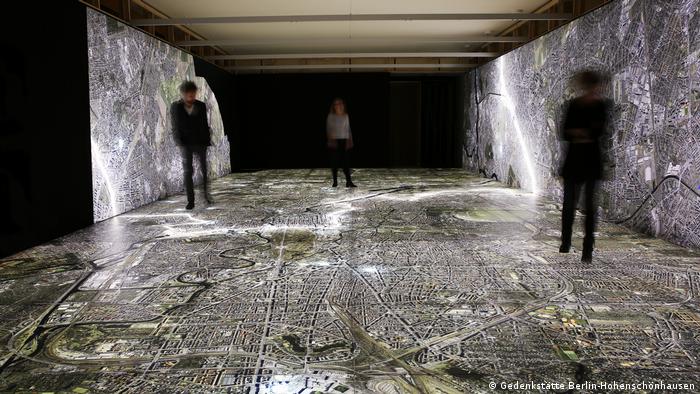
After a long day of work in October, 1960, Heinz Brandt and a colleague decide to go to a Bar in Charlottenburg. In the West Berlin district of Brandt encounters Eva Walter. The encounter is no coincidence: Both the young woman and the colleague are informal employee of the Stasi, the secret police of the GDR.
Your Plan: Brandt, to catch a former employee of the Socialist unity party of Germany (SED), the ruling state party in the GDR, and East Berlin to bring back. After one and a half years, the Stasi achieved your goal: Brandt is stunned in Walter’s apartment and in the GDR-adhesive high beautiful institution brought to live on the Communist side of the city.
Map of the Stasi
More than half a century later, has now been opened in this former prison, today the “Gedenkstätte Berlin-Hohenschönhausen”, the exhibition “Stasi in Berlin”, the to 31. To see March 2020. She tells stories such as that of Brandt and shows a map with Thousands of addresses that were used by the Stasi in Berlin. The exhibition is the result of two and a half years of research, and the crawl of more than 10,000 pages of official files.
“We are the first to have created a map of the city. Prior to that, were not mapped once the official dwellings,” says Jochen Krüger, one of the three involved in the project Explorer. “We had to find out the addresses of each individual. In West Berlin, however, we were not able to find the addresses, because the Stasi destroyed these files.”
Thousands Of Apartments
The Ministry of state security, short Stasi, was founded in 1950 by the SED under the direct leadership of the secret police of the Soviet Union. The unit acted as an internal police, a secret organization, investigative authority, and intelligence. She helped the ruling party to remain with an iron Hand of Power, and repressed any “subversive” behavior. To do this, you infiltrated thanks to a huge apparatus of employees and unofficial collaborators every aspect of the life of the East Germans, destroyed reputations, isolated and promoted the betrayal between families and friends.
At the time of its dissolution in January 1990, the Stasi employed 91,000 on officials – in Berlin alone, around 40,000. The number of informal employees was approximately 180,000, so statistically about one in 90. Citizens of the GDR.
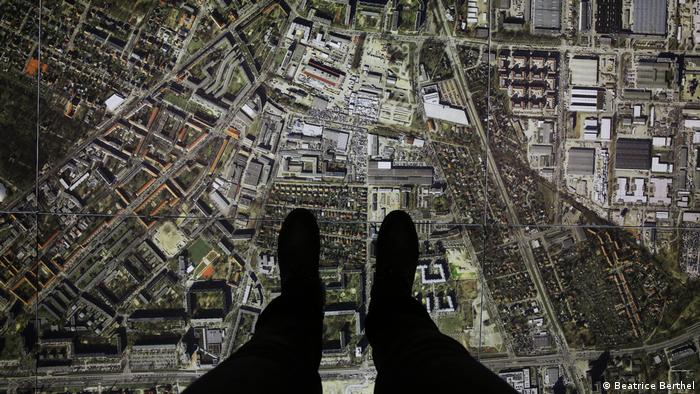
Berlin to the feet of The city from the point of view of the visitors of the exhibition
In Berlin, the secret police had a minimum of 4,200 locations, including 3.459 private apartments and houses, where the employees and agents met, in addition, 285 official offices, 18 workshops, a strong technical infrastructure and prisons. Alone in the oderberger Straße in Prenzlauer Berg, eleven homes were, where the group met for conspiratorial purposes.
“We knew from the structure of the Stasi in Berlin and their offices; so we tried to find these places. However, it was not so easy, because there were no records or lists, and the addresses were often changed,” says Krüger.
“There was a list of safe apartments, but we did not know exactly when they were used. Therefore, we have decided to analyze the locations only in the period between 1988 and 1989. We have checked everything with two sources, because even the Stasi employees made mistakes,” says the researcher.
Walk with Tablet
On the basis of the documents, photos, Videos, and Audios, the memorial in Berlin has created-Hohenschönhausen is a multi-media room, where visitors can go on a walk-in, 160 sq. m. large aerial image of Berlin for a walk and, with the help of a tablet by the Stasi in their operations used places to explore.
-
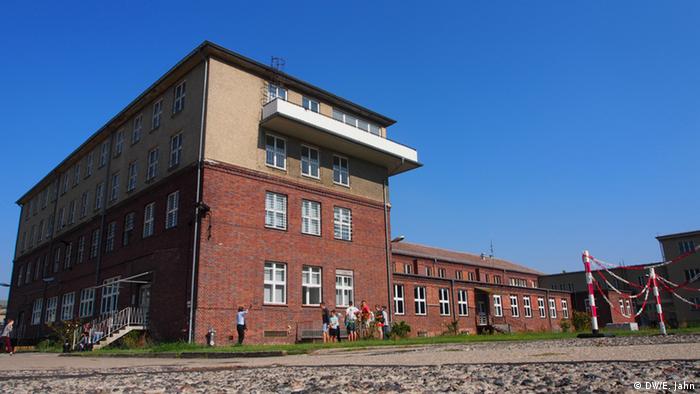
Berlin Stasi Prison
Building
From 1945 on, the Soviets took power, the site of the former kitchen as a prison camp. The cellar was of detainees to the Central investigation prison to rebuild. Concerned reported, as Are sleep deprivation, beatings, kicks, hours, long, or torture were tortured in a water cell. Food, clothing, and Hygiene were abysmal. About 1000 people died.
-
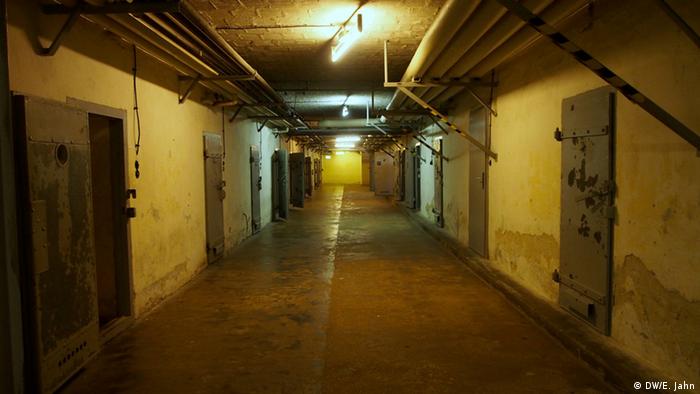
Berlin Stasi Prison
U-Boat
In 1951, the newly established secret took over the police, the SED, the Stasi prison. In the 1950s, a strike leader of the uprising of 17 were imprisoned in the cellars, above all, people who had opposed the Communist dictatorship, and resistance:. In June 1953, as well as reform Communists. Because in the damp cells, no natural light penetrated, called the Prisoners in the jail U-boat.
-
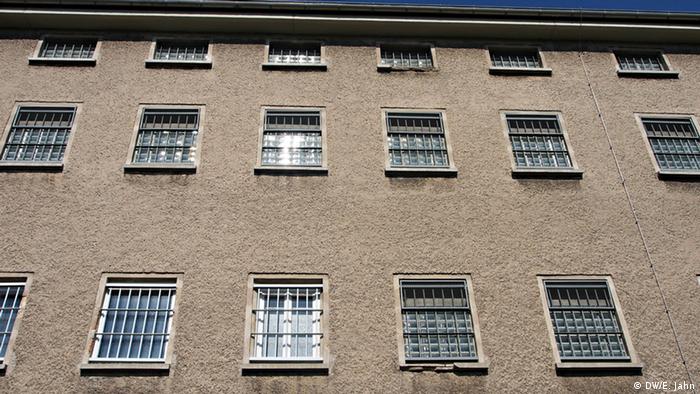
Berlin Stasi Prison
New construction
The end of the 1950s, a new building with about 200 cells and the interrogator took rooms in the old basement jail. The physical violence has been replaced by psychological methods of torture. After the wall was built in 1961, mainly people were arrested as they tried to flee from the GDR or to leave the country, but also a writer and civil rights activist.
-
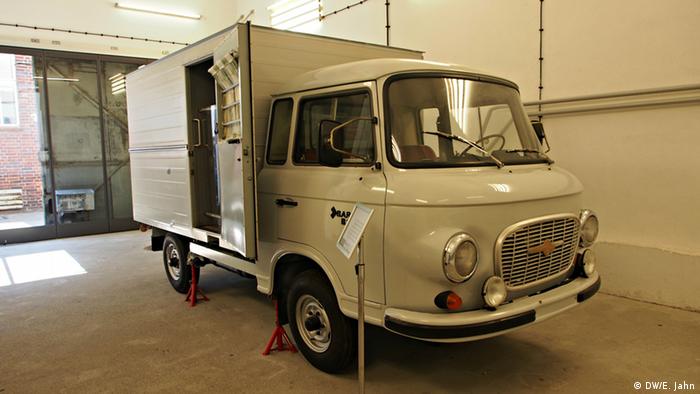
Berlin Stasi Prison
Prisoner transport
From the 1970s onwards, prisoners with such a Barkas B 1000 by the city to the prison, hohenschönhausen. The to the outside often as a fish or vegetable delivery vans, camouflaged vehicle had five tiny, windowless cells. Affected not knew where you were going, you. 90 percent of the Detainees moved to the Stasi in the statements initial questioning.
-
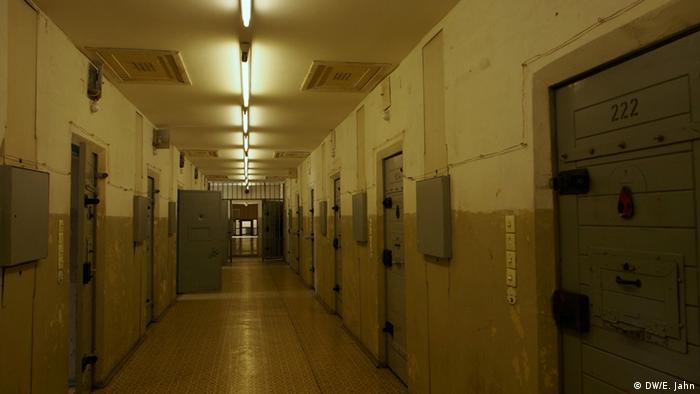
Berlin Stasi Prison
Cells tract
In the prison, and every prisoner was raised instead of name, only his cell number. In order to isolate you socially, came many long months in solitary confinement. Even conversations with the guards were forbidden. The only human contact of the interrogators – a perfidious method to get the prisoner to Talk was.
-
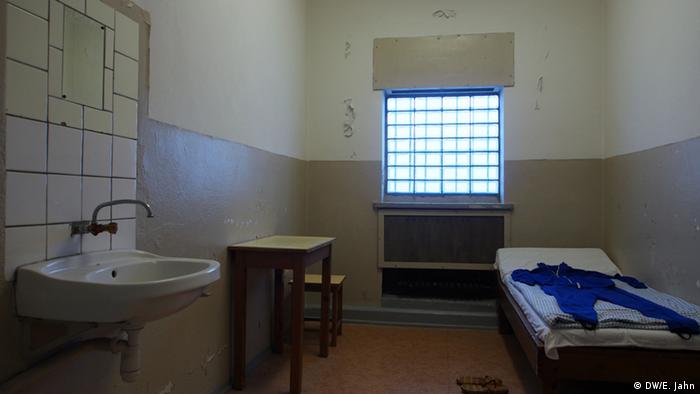
Berlin Stasi Prison
Prison cell
Up to three prisoners were accommodated in the different cells. Through the window made of glass blocks, you could see anything out there. A mirror and warm water were not available until 1983. During the day you could lie on the bunk, at night, only in a particular posture: on the back, face to the door, hands on the ceiling.
-
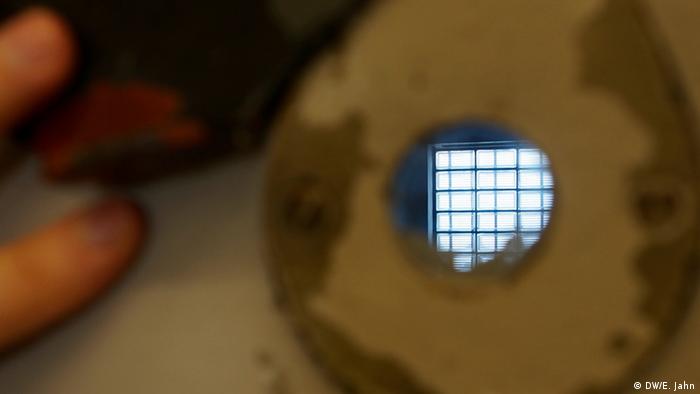
Berlin Stasi Prison
Peephole
As particularly stressful, the Detainees felt that the constant Surveillance in the cells through the peephole. Overseer, the prisoners also controlled during the Wash or on the toilet. At night, all for ten to twelve minutes was turned on also the light. Also heating and light could only be operated from the outside. Everything was designed to create a feeling of complete powerlessness.
-
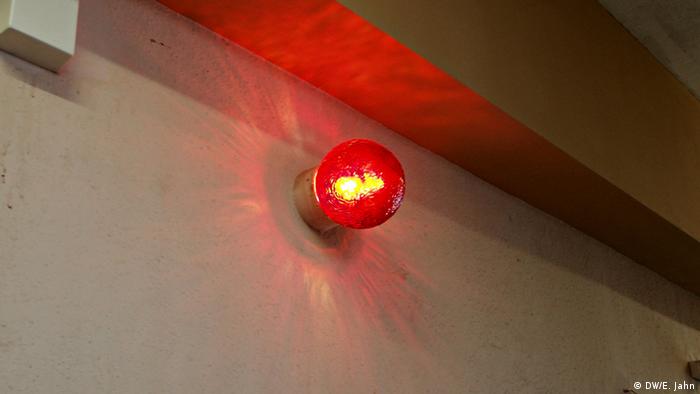
Berlin Stasi Prison
Alarm system
In the corridors of a wire cord along the walls excited. A detainee from his cell and was brought in for questioning, drew a staff on it, and the lights glowed red. Was another prisoner in the hallway, had to immediately face the wall turn. So it should be prevented that the prisoners encountered.
-
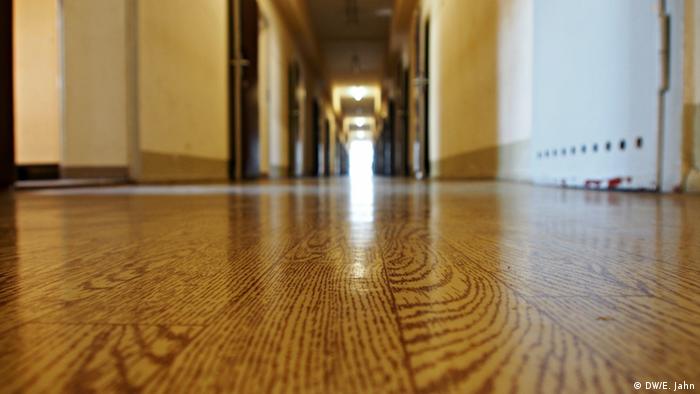
Berlin Stasi Prison
Interrogator tract
The cells tract grid locks of the interrogators separated rooms. Until today, the Linoleum of the floor, smells like a solvent was used in the GDR. All 120 interrogators rooms are equipped with double padded doors, behind which the often hours-long interrogations over several months instead of found. Prisoners should incriminate themselves, to be able to condemn them.
-
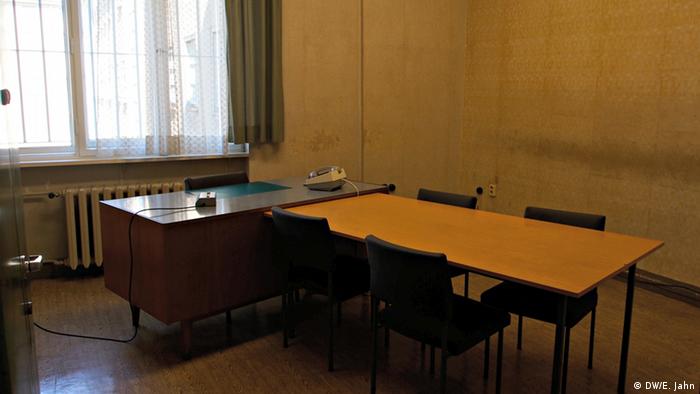
Berlin Stasi Prison
The interrogation room
The Stasi staff used sophisticated psychological methods. To threatened the start of the detainees with long sentences, or the arrest of relatives. Panic and uncertainty, you should wear down. Who showed a co-operative, the Confinement were promised relief: medical care, a book or a half hour on the exercise Yard.
-
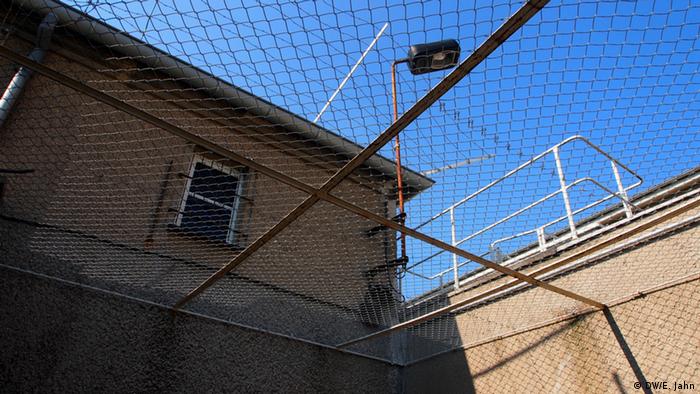
Berlin Stasi Prison
Freiganghöfe
These cells are similar boxes from the detainees were able to see the sky and breathe fresh air. You self-described cages, the farms as a Tiger. To stand still or approach the four-Meter-high boundary wall, was banned – just speak or sing. Above the mesh wire, armed guards patrolled constantly.
-
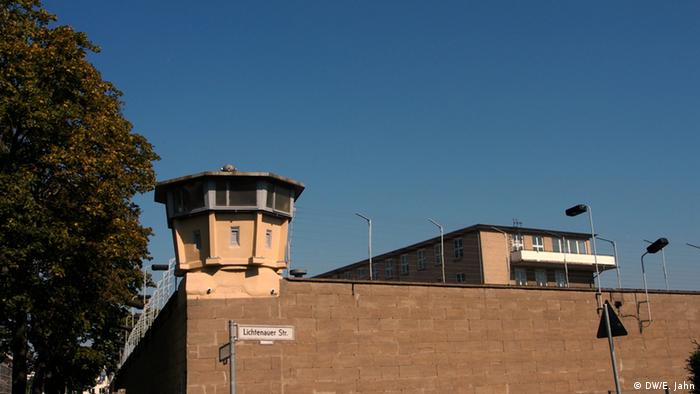
Berlin Stasi Prison
Memorial
The fall of the Berlin wall led to the end of the Stasi remand prison. But only a few interrogators were held accountable, none received a prison sentence. Because the building and decor have largely remained intact, the current memorial site of hohenschönhausen is a very authentic picture of the system of political justice in the GDR.
Author: Elisabeth Jahn
The memorial’s research shows the omnipresence of the Stasi on both sides of Berlin. Before the wall was built in 1961 kidnapping of dissidents such as Heinz Brandt in the Western part of the city were on the agenda. There are records of about 400 such cases.
Dissidents were spied on
Later, the secret police, “softer” strategies such as espionage and the recruitment of informants developed circles in Politics and in the administration of West Berlin. “The Stasi was with West Berlin very familiar, but they had to adjust their activities to the strong presence of the Western counter-espionage and police. So she has to behave with the utmost caution,” says Jens Gieseke, Stasi expert at the center for contemporary historical research in Potsdam.
The dissidents in West Berlin, however, were not out of their reach. “The Stasi was keen to prevent any kind of Opposition. They persecuted dissidents on the other side of the wall. You infiltrated agents in the private and professional lives of the dissidents, was blackmailing her and brought her in every sense of the difficulties,” says Jochen Staadt, a political scientist at the Free University of Berlin.
Great Bugging
The Stasi wanted to know everything about West Berlin. “She was able to phone conversations listen, if you knew the number, and even phone calls between the West Berlin police and authorities from Western Germany to record,” says Staadt. At the end of the 1980s, there were, according to the memorial Berlin-Hohenschönhausen 25 monitoring stations in Berlin, the recorded phone calls. Between 400 and 600 such calls were intercepted per day.
One of the goals of the Stasi’s operations in West Berlin and in West Germany as a whole – was to obtain information about politicians, parties and government representatives that dealt with East German Affairs. “They wanted to know in advance what plans to West Germany and does, especially in terms of the negotiations between the two countries,” says Staadt.
Lucrative Industrial Espionage
However, the massive presence of the Stasi in West-Berlin had also economic reasons. So many spies were given access to industrial research facilities. “They gathered information and used it without permission in the East German industry. They [the authorities of the GDR, ed. d. Red.] saved by the theft of technology a lot of money,” says Staadt.
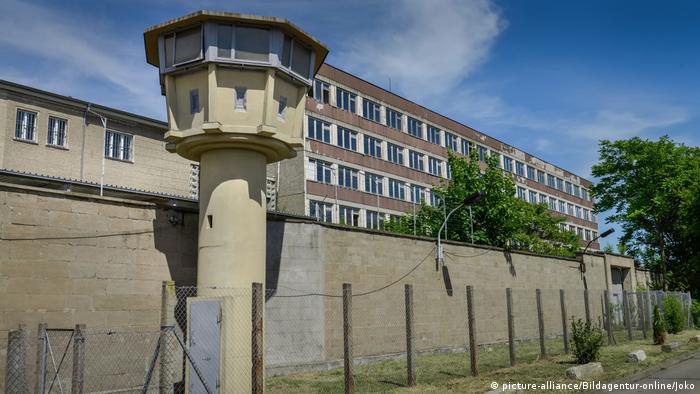
Once part of the GDR surveillance state, today memorial: the former prison Hohenschönhausen
The secret police of the GDR infiltrated every aspect of the private lives of its citizens, spied on them, listening in on your phone conversations and read your Post. But only a few in West Berlin could imagine that the Stasi also had an easy access to the of France, the United States and the United Kingdom-controlled sectors.
Stasi in the Federal Chancellery
During the Cold war, an East German company operating in the much-visited Zoo station in West Berlin. And the Stasi took advantage of this by letting your agent the ticket counter and the booking to use points. Unofficial employees and agents were even able to use a specific locker in the train station.
Over the years, the Stasi, occupied many important positions in West Germany with their secret agents. “Günter Guillaume even had access to the Federal Chancellery. The most important spy was Rainer Rupp, who worked in NATO headquarters in Brussels, from where he sent hundreds of secret documents in the East,” recalls Gieseke.
Military Targets
The strong presence of the Stasi in the Western Parts of the city in connection with the plans of the East German leadership, West-Berlin with the military means to take. It gave Details of the places should first be attacked, such as bridges, railway stations and airports. “The last Plan, the one we found was from 1987,” says Jochen Staadt.
The Stasi even led a current list of political leaders, police officers, journalists and officials, who should be imprisoned after the Invasion. The 30-year anniversary of the fall of the wall shows just how spectacular these plans are backfired.
-
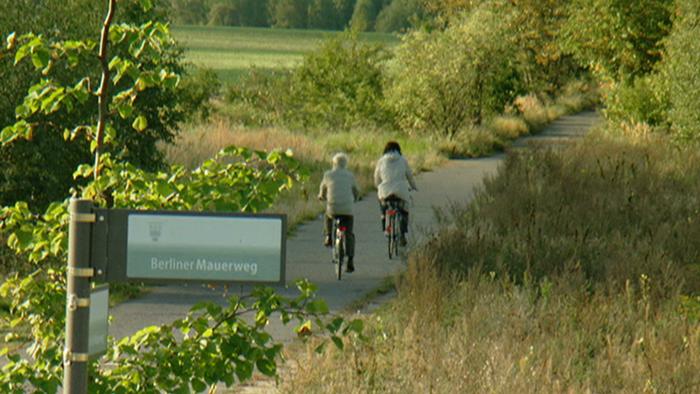
Ten reasons for the Berlin wall
The Wall Trail
For 28 years the wall to the East separated Berlin from West Berlin. Almost as long as Berlin is United again now. Of the past as a divided city is always less. Where exactly is the Bricked-up was? How did people live in your shadow? The Berlin wall trail gives answers. To 160 kilometers, it leads through and around the city.
-
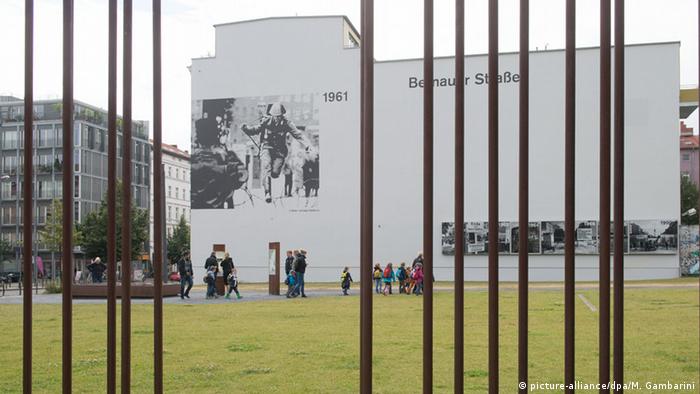
Ten reasons for the Berlin wall
Berlin Wall Memorial
The Tour can start, in principle, in any place, on foot or with the wheel. A good start to the Berlin wall memorial is. 1.4 kilometers follows the course of the wall along Bernauer Straße. It shows the murderous architecture of the border installations, and is reminiscent of all those people who lost their life here.
-
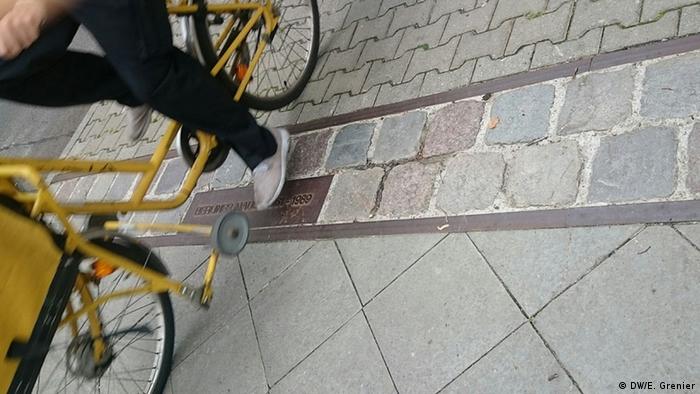
Ten reasons for the Berlin wall
Paving stones in the Asphalt
A nearly 6-km-long double band of cobblestones in the course of the wall to present. Where was the East, where West was? In irregular intervals you will find a bronze ribbon with the inscription: “Berliner Mauer 1961-1989”. This font can only be read if you stand on the former West side of the wall.
-
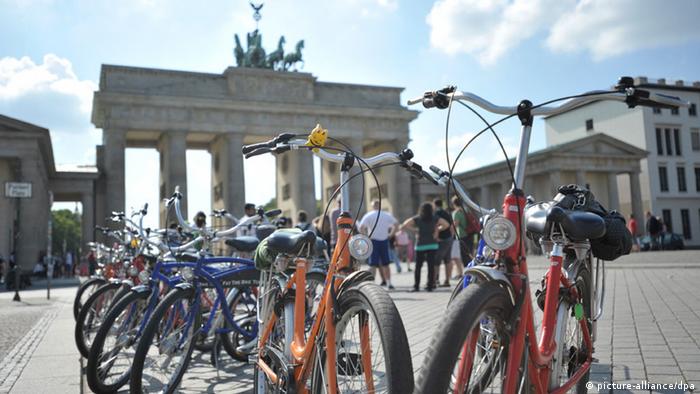
Ten reasons for the Berlin wall
The Brandenburg Gate
If one follows the course of the wall towards the center, and you end up in today’s government district on the river Spree, and at the Pariser Platz with the Brandenburg gate. The construction of the wall had isolated the Brandenburg gate, neither from the West nor from the East, it was accessible. And so it was in the world a Symbol of the division. Today it is Germany’s Symbol of unity.
-
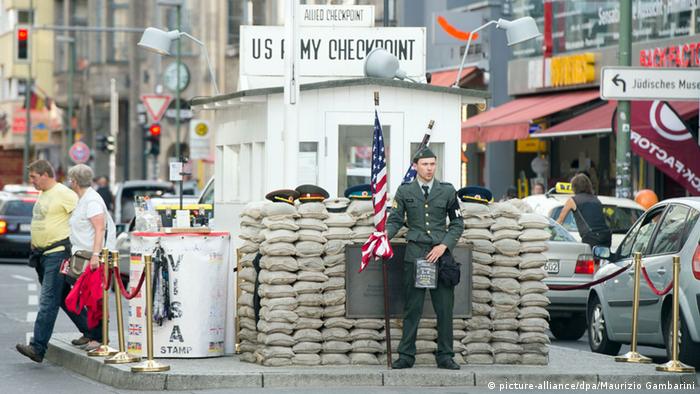
Ten reasons for the Berlin wall
Checkpoint Charlie
Of all the border of the city of transitions, he is the most famous one, Checkpoint Charlie. The Original is here nothing more, the control point is a Remake from the year 2000, surrounded by cheap Souvenir shops. The disney-fication progresses. Daily tourists besiege this place. As soldiers disguised as men readily pose for the obligatory souvenir photos for a fee of course.
-
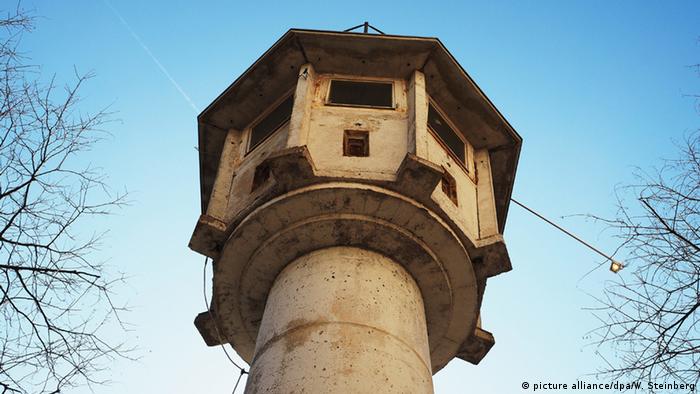
Ten reasons for the Berlin wall
GDR watchtowers
On the East side there was along the wall, more than 300 watchtowers. Round-the-clock soldiers guard shoved in the tower, the pulpit, the border strip in the view, the weapons at the ready. Today, only three towers are preserved, all of which are protected as a historic monument. This is quite hidden in a side street of the Potsdamer Platz. He can be visited.
-
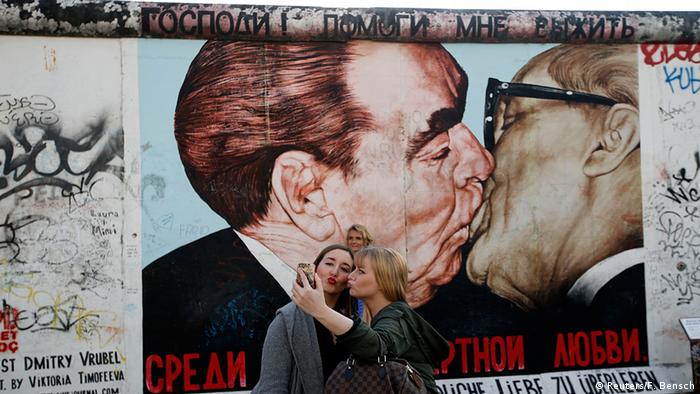
Ten reasons for the Berlin wall
East Side Gallery
Here, too, the wall trail leads past, on the longest preserved piece of the Berlin wall. The West side of the Berlin wall was for their colourful Graffitis famous. The East side was gray. International artists brought 1990 color to the game. They painted in the district of Berlin-Friedrichshain is a part of the 1.3 km of East of the wall, and created the longest Open Air gallery in the world.
-
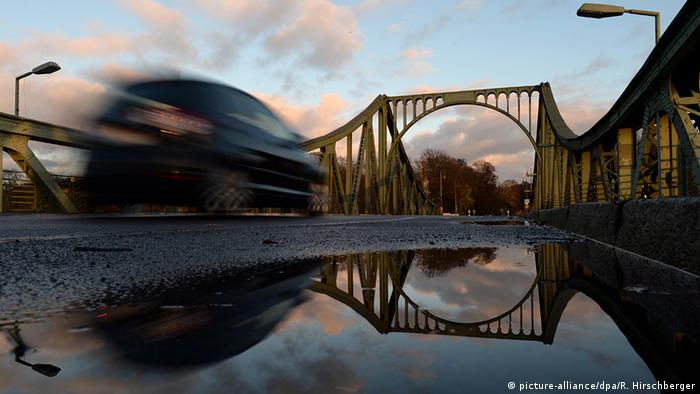
Ten reasons for the Berlin wall
Glienicke Bridge
The largest part of the Berlin wall trail runs for 110 km along the city boundary of Berlin to the surrounding areas. A Highlight is the Glienicke bridge between Berlin and Potsdam, the scene of a spectacular agent exchange actions during the Cold war, A Deal, made in 1962, a sensation, provided the template for big Hollywood cinema – Steven Spielberg’s “Bridge of Spies” with Tom Hanks.
-
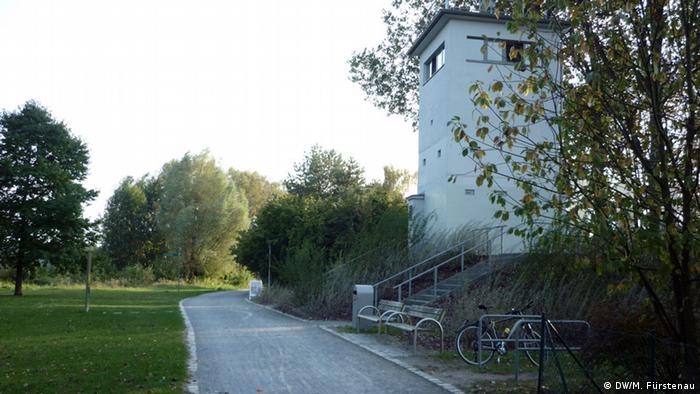
Ten reasons for the Berlin wall
The Museum in the Watchtower
Long stretches of the Berlin wall trail run through the woods, along rivers, through meadows and fields. The nature of Berlin was often the scene of risky attempts to escape. Narrow Places of the river Havel, for example. The border divided towns and separated families – as in Hennigsdorf is 20 kilometers North of Berlin. The Museum in the watchtower and tells the story of the life of the wall.
-

Ten reasons for the Berlin wall
Time of the cherries
Thousands of Japanese cherry trees line sections of the wall trail. Donated by the Japanese at the time of the German reunification. She turned to the wall each year in the spring in a pink sea of Flowers. Also beneath the böse bridge in the district of Pankow you, the bridge, which opened as the first border crossing, in the night when the wall fell, on 9. November 1989.
Author: Elizabeth Grenier, Anne Termèche
























